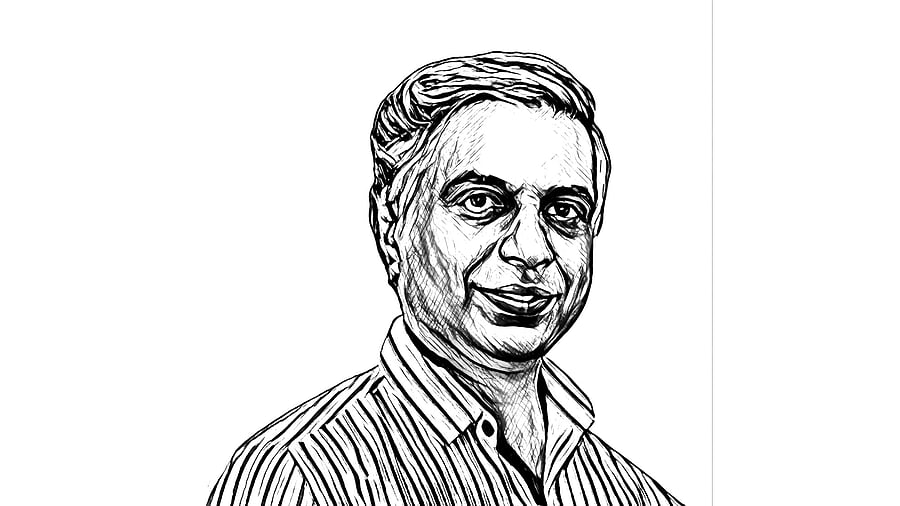
S R Ramakrishna often sees high art in kitsch and vice versa
Books and articles about Indian musicians tend towards excessive praise, often portraying them as gandharvas (demigods) taking on human form and gracing the earth with their presence. In a conversation described in the book Annapurna Devi: The Untold Story of a Reclusive Genius, Ustad Ali Akbar Khan, the sarod maestro second only to Pandit Ravi Shankar in taking Indian raga music to Western audiences, brings down such assumptions to the ground with a thud. If you love music, he says, don’t get too close to musicians, or you will be disillusioned.
It is no secret that the path of Indian music is long, arduous, and more often than not, frustrating. The story of Annapurna Devi (1927-2018) and Pandit Ravishankar, the sitar maestro to whom she was married for some years, found its way into Hindi cinema when Hrishikesh Mukherjee made Abhimaan (1973), starring Amitabh Bachchan and Jaya Bhaduri. It is a thinly veiled story of a musician-couple and the path of envy and heartbreak that it takes. The Marathi film Disciple, directed by Chaitanya Tamhane, also has its ear close to the ground when it delves into the world of classical musicians and their formidable pursuits.
Annapurna Devi was the daughter of Ustad Allauddin Khan (1862-1972), the saintly musician who played multiple instruments, taught music to a maharaja. He traced his lineage to Mian Tansen, and his music in turn shaped some of the greatest of Indian musicians who won worldwide admirers in the era of gramophone records. Some clandestine recordings of Annapurna Devi’s surbahar playing exist, but no commercial recording is available to this day.
The revered Allauddin Khan had a routine that included walking up a hill in the morning to offer prayers to the Hindu goddess Sharada, imparting lessons to instrumentalists and vocalists through the day, and performing namaz in the evening.
Even as a young girl, Annapurna Devi had acquired a reputation for excellence that matched and excelled Ravishankar’s. The book traces Ravishankar’s jitters to an incident in their early youth. Brijnathsinghji, maharaja of Maihar in Madhya Pradesh, invites her over to perform the surbahar, a bigger version of the sitar. Ravishankar insists he wants to play the instrument after she is done. It is already dinner time, and the maharaja walks away midway.
When the marriage is on the rocks, the book says, Annapurna Devi takes a vow that she will never perform in public again. It is a sacrifice she willingly undertakes in a bid to save the marriage, but too many forces are at play, and it isn’t long before they reach a point of no return. She sticks to her vow till the very end, even after a painful battle for the custody of their son Shubho, and a divorce.
The book is studded with incredible stories that tell of the monastic resolve of Annapurna Devi. When she is under pressure from Indira Gandhi, then the prime minister, to perform for George Harrison of The Beatles and Yehudi Menuhin, she refuses as always, and eventually makes a small concession – they are welcome to sit outside her door and listen to her practise in the wee hours of the morning.
Atul Merchant Jataayu, author of the book, was part of a small, select group of students she mentored with affection. They are put through the hard rigours of classical music at her flat in Mumbai. Saturdays are reserved for casual banter and laughter. The book is based on anecdotes recounted at the Saturday sessions, and also what her close associates saw unfolding before their own eyes.
Annapurna Devi: The Untold Story of a Reclusive Genius (Penguin) is a gripping chronicle of her troubled life and times. It also tracks how she persevered, pushing away blank cheques with contempt, to rise to heights never scaled before. Ravishankar had narrated his side of the story in Raga Mala, his lushly illustrated and richly produced autobiography published in 1997. This book is sometimes a counter to present the story from her perspective. An excellent Kannada translation by Sandhya Rani is coming up soon.
Pandit Hariprasad Chaurasia, who wrote the preface for the book, is a celebrity-student Annapurna Devi praised and snubbed in equal measure. Once, back from a tour abroad, he proudly hands her an expensive clock, extolling its virtues. She flings it out of the window.
The story of Ravishankar, the virtuoso who dazzled the world with his solos and collaborations (West Meets East with Yehudi Menuhin is among his most magnificent recordings), and Annapurna Devi, who worked in severe isolation on her austere music, is way more dramatic than a Greek tragedy. It features two exalted heroes, one bohemian and the other rishi-like, and serves as a complex parable on art, life, healing and redemption.